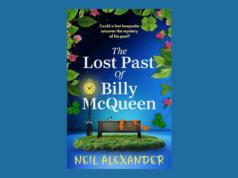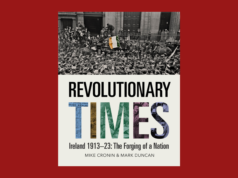
SNOW
John Banville | Faber & Faber | £14.99 hbk | 336pp | 9780571362677
Review by Susan McKeever
Chapter One of this layered whodunnit opens with a line that could come straight from the opening of a game of Cluedo: ‘“The body is in the library,” Colonel Osborne said. “Come this way.”’ But there’s no lead piping or revolver here to lead to a neat conclusion. It’s coming up to Christmas, 1957, and a Catholic priest, Father Tom Lawless, has been brutally murdered, his genitals hacked off and missing from the crime scene. He’s posed on the library floor with his hands piously clasped, and the copious blood that must have resulted from such a gelding has been mostly mopped up by the housekeeper, Mrs Duffy. Snow prevented the ill-fated priest from returning home to the presbytery after his dinner at the Big House. And the snow continues to fall, blanketing the rural landscape, casting its glaring light, and hiding layer upon layer of local secrets.
Into this scene enters Dublin-based Detective Inspector St John Strafford (with an ‘r’, as he must patiently remind practically everyone he meets). The murder took place in Ballyglass House, Wexford, hereditary seat of the aristocratic Osborne family. A huge Protestant–Catholic divide flourishes in the area and Strafford is instantly marked by Geoffrey Osborne as one of their own, while the staff, and more junior police workers, are referred to as ‘them’—Catholics. Presiding over all proceedings looms the all-powerful Catholic Church, pulling the strings like a puppet-master to keep its reputation clean. Lawless’s mutilated body must be driven to Dublin, not Wexford, for autopsy. The newspaper reports the priest died in a ‘mishap’. Archbishop McQuaid, whose influence can make or break anyone’s career, whether they’re ‘Catholic, Protestant, Gentile or Jew’, wants the grisly details ‘withheld’ from the public.
From the moment Strafford arrives at the murder scene, time slows down to a pace that makes him feel as if he’s struggling through water, living on another plane of existence. As he painstakingly attempts his investigation, we are introduced to the cast of characters that inhabit the sleepy hamlet of Ballyglass. Within the walls of the manor house itself live the colonel’s fey young (second) wife, Sylvia, whose skin was ‘the colour of skimmed milk into which had been mixed a single drop of blood’. There’s the coquettish teenage daughter, Lettie, and the handsome, hostile medical student son, Dominic—‘Trinity had given him a swagger that still wasn’t convincing’. Doctor Hafner visits regularly to give Sylvia ‘medicine’ for her nerves. It’s clear that nothing is what it seems with the Osborne family members—each one appears to be playing an exaggerated role in a staged murder-mystery play while lying through their teeth to the beleaguered detective. Beyond the manor walls Strafford wanders into the woods of the estate to come upon the ‘feral’ stable boy Fonsey, who lives in a foetid, dilapidated caravan. Fonsey knew Father Lawless and, when pushed by Strafford, admits he was ‘friendly’: ‘Ah sure they’re all that. The priests are all friendly.’
Beyond the estate is the village inn, reeking of porter and often shrouded in a fug of turf smoke, where Strafford stays, meeting further stage-like characters such as Reck, the garrulous innkeeper, and Peggy, the flirty, red-haired waitress. Again, it’s clear that no one is being entirely honest with the detective.
Readers unfamiliar with Booker Prize-winning Banville’s lush, layered prose will discover the richness of language and wit that elevate this into much more than a formulaic murder mystery. I was drawn in from the start by the atmosphere, descriptions, characterisations and incisive wit. Loose ends are satisfyingly tied up in the coda at the end of the book, ten years after the event happened. But can we really believe what the tricky Lettie says? That’s for the reader to decide.
Susan McKeever is an editor, writer and ghostwriter for several Irish and international publishers and authors. She works from her home in the red-brick heart of Dublin’s Portobello.











